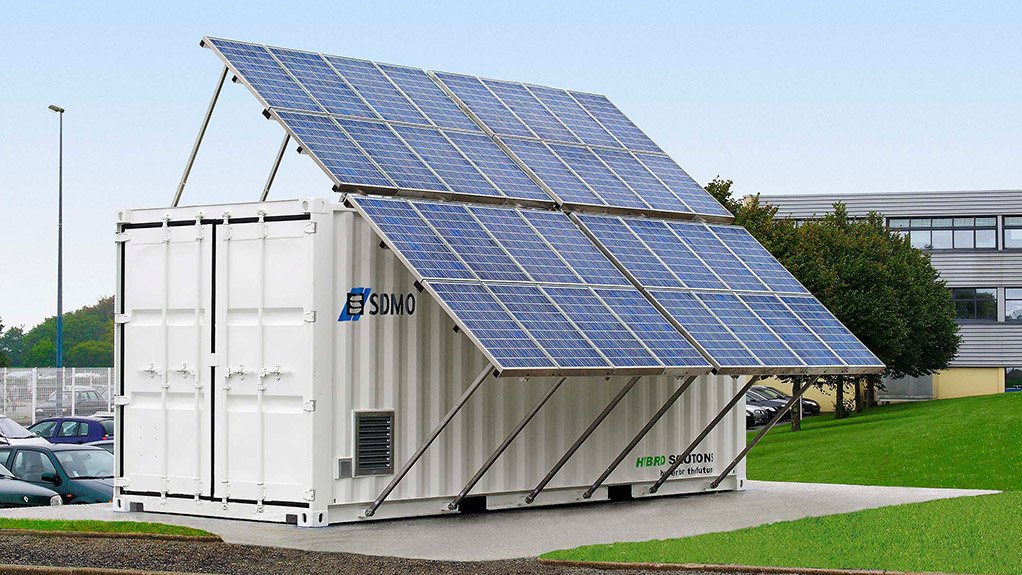
HYBRID SOLAR PV GENERATORSolar PV panels coupled to a genset provide renewable power during the day and can generate power at night
Standalone electricity generation sets (gensets) can be used to manage the resulting power produced by solar thermal and solar photovoltaic (PV) renewable-energy generation plants and can also be used to provide electricity in a rural area as part of a hybrid renewable generation plant, says French energy and genset company SDMO VP Patrick le Guen.
A small plant, producing between 100 kW and 400 kW, comprising solar PV panels and gensets, can be used to electrify towns in rural areas that are not connected to the national electricity grid and can also be deployed in commercial applications such as mining, water desalination, water treatment and telecommunications, he notes.
“Companies can use a single genset to synchronise power from the solar PV panels, which will power the system during the day, while the genset manages the frequency and voltage and will provide power at night. Companies can use the genset to lead the power produced by the renewable system, reducing the impact of changes on a renewable plant’s power output.
“In a small-scale solar thermal power plant, one genset is used as a standby and to black-start the plant’s turbine generators and to power pumps and the movement of the panels. Another genset is used to manage the frequency and voltage changes. Each of the gensets will operate on a separate network and, if one fails, the other can manage both systems, ensuring the plant remains fully operational.”
The fast-growing wind and solar renewable-energy market is expected to comprise 2.5% of global energy generation capacity by 2030. Prices of renewable generation plants and components will decrease as technologies mature and new developments take root, but most renewable plants will require gensets to mitigate the variability of wind and sun, he emphasises.
“SDMO’s aim is to design, build and deliver all the gensets and management systems between the gensets and the solar PV panels or the thermal collectors.”
However, the main interest in SDMO’s genset has been for the fast deployment of multimega- watt power plants. These large-scale generation plants can be installed and commissioned within six months, notes Le Guen.
The main applications of large SDMO generation plants have been for mining, in West Africa and Latin America, including a 20 MW plant in Panama and a large 60-unit plant in Chile. SDMO has also supplied 350 × 2 MW gensets to Chile, he notes.
“SDMO invests significantly in research and design and can build gensets to specifically operate in different environmental conditions. Our team of 100 dedicated designers and project engineers design gensets to meet the specific project requirements.
“The company also manufactures gensets that produce less vibrations and noise, enabling them to be installed in urban buildings,” he says.
SDMO derives 40% of its revenue from projects. The company has supplied 3 000 gensets to Southern Africa and can supply gensets for distributed networks, standby power and field and rental applications, he concludes.